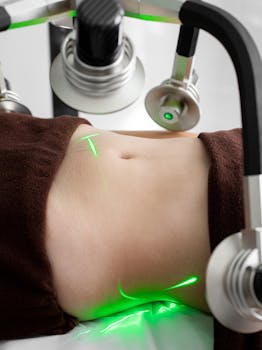The deep plane face lift is a specialized cosmetic procedure designed to address signs of aging by targeting deeper facial structures. This innovative approach provides a more comprehensive solution than traditional facelift methods by repositioning tissues not just at the superficial level but also in the underlying layers. Many seeking a youthful and natural appearance are drawn to this procedure’s potential to create long-lasting results.
Understanding the Deep Plane Face Lift
The deep plane face lift delves below the superficial musculoaponeurotic system (SMAS) layer to adjust the deeper tissues connected to facial muscles. Unlike a standard facelift, which might only tighten the skin and the SMAS layer, the deep plane approach repositions the muscle and fat layers. This results in a more natural enhancement, smoothing out deeper lines and sagging skin effectively.
Benefits of a Deep Plane Face Lift
One of the significant advantages of a deep plane face lift is its ability to provide a naturally rejuvenated look. By altering the deeper structures of the face, it reduces the risk of an overstretched or “worked on” appearance. Patients often look refreshed rather than drastically different, as the focus is on restoring the natural contours of the face.
Additionally, the effects of a deep lifting technique tend to be more durable, as it directly tackles the core tissues contributing to facial sagging. This can be especially beneficial for individuals looking to achieve a comprehensive lift covering both the face and neck area.
Drawbacks and Considerations
While the results of a deep plane face lift can be impressive, it’s important to consider the potential deep plane facelift complications. As with any surgery, there are risks involved, including infection, scarring, and potential damage to facial nerves. The recovery time may also be longer compared to more superficial facelifts, due to the surgery’s complex nature.
Patients considering this procedure should engage in a detailed discussion with their surgeons about both the risks and the recovery process. It’s essential to have realistic expectations and understand that while the results can be significant, they do require a more extended healing period.
Who Is an Ideal Candidate?
Individuals experiencing significant sagging in the cheeks, mid-face, jowls, and neck may benefit most from a deep plane face and neck lift. Candidates should be in good health and non-smokers, as smoking can impede healing and affect results. It’s crucial for prospective patients to have clear, realistic expectations about the outcomes and to understand the commitment to post-surgery recovery.
The Procedure
During a deep plane neck lift, the surgeon makes incisions typically around the hairline and natural creases of the face to minimize visible scarring. They then carefully lift and reposition the deeper muscular and fat layers. The surgery can take several hours, with most patients under general anesthesia during the process.
Surgeons meticulously handle the deeper facial plane to avoid nerve damage and ensure precise results. Recovery involves swelling and bruising, but patients can typically engage in light activities within a couple of weeks and resume normal routines after about a month.
Long-Term Results and Maintenance
The longevity and natural appearance of the results are often appealing aspects of this surgery. Unlike the more temporary fixes offered by injectables and fillers, a deep plane facelift delivers results that can last 10-15 years, depending on factors like skin type and lifestyle.
Maintaining the benefits of a deep plane face lift involves taking good care of your skin. Adopting eco-friendly skincare products can support long-term skin health and enhance the surgical results. For more insights, consider exploring our guide to sustainable skincare practices.
Conclusion
The deep plane face lift offers a potentially more profound and lasting solution for facial rejuvenation compared to traditional methods. Its ability to redefine facial contours produces results that are both significant and natural in appearance. Consultation with a qualified surgeon is essential to explore whether this advanced facelift technique aligns with your aesthetic goals.
- The deep plane face lift targets deeper tissue layers for more natural results.
- Longer-lasting effects compared to traditional facelift methods.
- Best for addressing significant facial sagging and aging.
- Involves a comprehensive recovery process.
- Consultation with an experienced surgeon is crucial.
What distinguishes a deep plane face lift from a standard facelift?
A deep plane facelift adjusts deeper tissues connected to facial muscles, while a standard facelift primarily addresses superficial layers, which can lead to more natural and lasting results.
Is the recovery time longer for a deep plane face lift?
Yes, the recovery time is generally longer due to the complexity of the procedure, but the results are often more substantial and longer-lasting.
Are there specific risks associated with deep plane facelift complications?
Potential risks include infection, scarring, and nerve damage, making it essential to choose an experienced surgeon and be well-informed about potential outcomes.
Can a deep plane face lift be combined with other procedures?
Yes, it can often be combined with other cosmetic procedures like eyelid surgery or brow lifts to achieve a comprehensive rejuvenation effect.
Where can I learn more about this procedure?
For more detailed information, you can refer to this educational resource.






